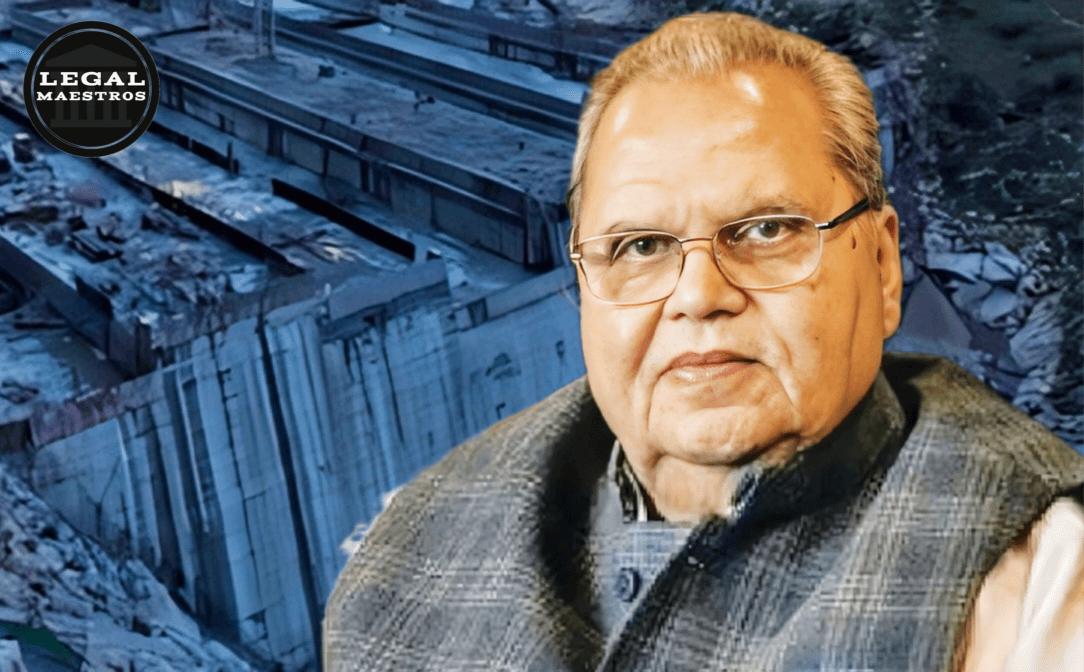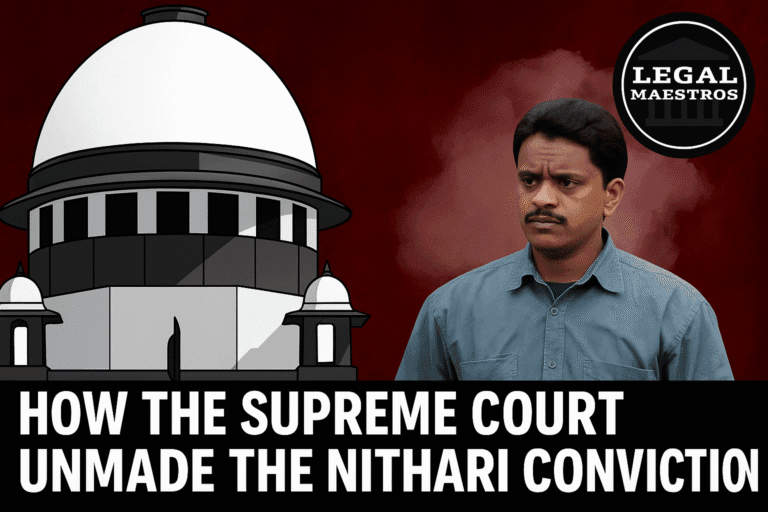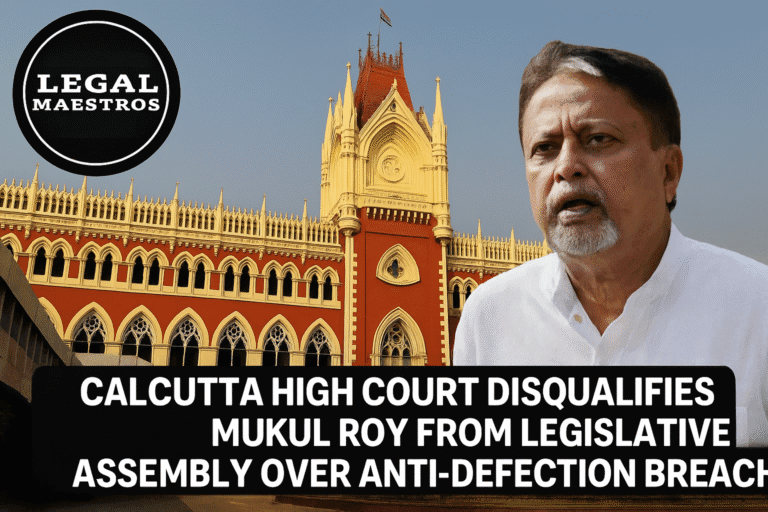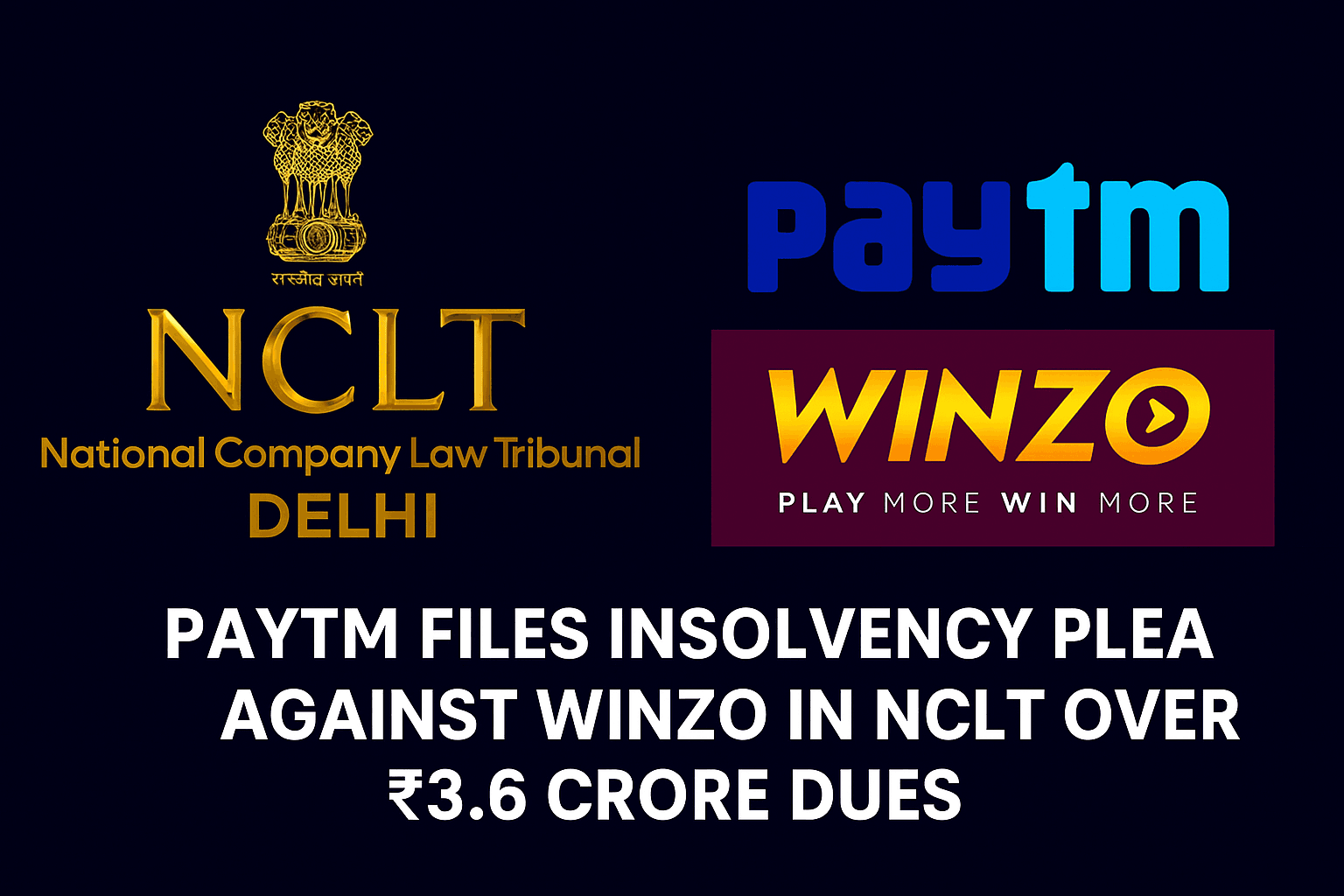
The death of Satya Pal Malik at the age of 79 brings to the conclusion a quite controversial and long lasting political activity of the character. Although his time as the final Governor of Jammu and Kashmir in the wake of Article 370 being abolished may be an important aspect of his legacy, his last years became marked in another type of struggle specifically, a legal one caused by his own instance of corruption in the Kiru Hydel Project. The case gives us an interesting, and sometimes, confusing study of law in India which occurs when a whistle-blower against deemed wrong-doing is targeted by the same law at a later stage.
The article seeks to give a clear and simple review of the legal matters involved in a case like the Kiru Hydel Project case with a view to the process of transforming a common street claim of corruption to a criminal charge.
The origin of the Accusations
The novel opens in the month of Oct, 2021, when Satya Pal Malik, when he was the Governor of Meghalaya, also made a titillating declaration in the public arena. According to him, he was bribed 300 crores to clear 2 files when He was serving as the Governor of Jammu and Kashmir (28 August 2018-October 2019). According to him, one of these documents was related to a contract of the Kiru Hydroelectric Power Project. He stated that he had declined the offer and called off the tender, saying, that he had gone to the office wearing five kurtas and would proceed leaving the same.
For any queries or to publish an article or post or advertisement on our platform, do call at +91 6377460764 or email us at contact@legalmaestros.com.
The given project is a run-of-the-river scheme of 624 MW erected on Chenab River in Kishtwar district of Jammu and Kashmir. It was the civil works of the project and the contract had the value of around 2200 crores. The project by uses of which the company is developing is a joint venture of National Hydroelectric Power Corporation (NHPC), Jammu and Kashmir State Power Development Corporation (JKSPDC) and Power Trading Corporation (PTC).
legal Machinery is put into motion
The fact that Malik is a high-ranking constitutional functionary could not go without a statement. It initiated a series of events that has become one of the classic models of how the corruption charges should be handled in India.
- CBI Inquiry: On observing the allegations leveled by Malik, the government of Jammu and Kashmir sought to have a CBI inquiry into the matter (Central Bureau of Investigation is India government premier anti corruption and crime investigation agency). That is the normal process when it comes to accusations against high-ranking people in public service and of grave nature.
- Investigation and FIR: In 2022 the CBI made a preliminary inquiry and registered a First Information Report (FIR). FIR is the initial process of investigation of a criminal case. It establishes a formal process of the initiation, through which the agency prosecutes, collects evidence, interviews witnesses, and makes searches. In this case, the FIR has listed the names of various people like the then-Chairman of CVPPPL and other officials and the construction company Patel Engineering Limited on the ground that it was a decision that has been taken in a board meeting to re-tender the contract by using an e-tendering with reverse auction process and not been implemented. According to CBI, this collapse resulted in the tender being given to a single company which is a private firm in violation of the stipulated requirements popularly believed to be a corrupt deal.
- The Transition of Whistleblower into the Accused: The complete twist that no one saw coming in this case was the way the CBI chose to turn its attention. Although at the beginning, the case had been started due to the revelations of Malik, the investigation on the case by CBI conspired the naming of Malik and his aides as accused. The CBI accused Malik and his associates of clearing the contract in exchange of the bribes that were paid to Malik and his associates. By doing this, the former Governor was turned into a criminal suspect by a whistle blower.
The Law and the Practice
The laws that would primarily govern this case are the Prevention of Corruption Act, 1988 and those of the Ranbir Penal Code since the alleged crime was committed before the abrogation of Article 370 when laws of the erstwhile state were still in existence.
For any queries or to publish an article or post or advertisement on our platform, do call at +91 6377460764 or email us at contact@legalmaestros.com.
- Public Servant and Corruption: Prevention of corruption act, 1988 specifically aims at curbing corruption by public servants. A public servant is an expressions that captures broadly defined government workers and officers including a Governor. It becomes a crime under the law to accept any undue advantage by a public servant to discharge an official act.
- Criminal Conspiracy: One of the most important sections that the accused shall be targeted under in this particular case is under Section 120-B of the Ranbir Penal Code (which is similar to the Indian Penal Code). This part is concerned with criminal conspiracy as a legal term that is used to describe an agreement by two or more individuals to perform an illegal act together. The argument of the accused in the case brought before the CBI is based on the argument that the accused were engaging in a conspiracy to cheat the tendering process to win the contract in consideration of bribes.
- Prosecution Sanction: A very important provision in prosecution of public servants in India is the issue of prior sanction. The provision of Section 19 of Prevention of corruption Act makes it clear that a court in India would not be in a position to take cognizance of an offense of corruption against a public servant without the consent of the government. This condition is laid out to cushion officials against malicious prosecution, although it has a tendency to be condemned as an impediment to accountability. The legal requirement would have been a factor with Malik since he would no longer be in office and the process of a having a sanction would therefore have been different.
The Unanswered Questions and the Chargesheet
The CBI slapped a chargesheet against Malik and some other people in May 2025 a few months prior to his death. A chargesheet is a court paper delivered following the completion of investigation; it contains charges and supporting evidence against the suspect. The chargesheet filed by CBI in Kiru case accused Malik and his aides as well as CVPPPL officials and the officials of the private firm of criminal conspiracy and corruption.
This move threw up numerous questions:
- Credibility of a whistleblower: How to prosecute a case where someone first uncovered a case of corruption to the eyes of the society? Malik and his sympathizers claimed that the case was a kind of political witchhunt as an effort to muzzle a critic of the regime. His statements regarding other controversial topics confirm this attitude: the Pulwama attack and the protest of the farmers.
- The character of evidence: The case of the CBI would also have to demonstrate that Malik was not merely offered a bribe, but that he was engaged in a conspiracy with others to accept the bribe. This would be based on the raids and seizure of documents and cash made by the agency. The chargesheet would elaborate the exact details of how the said corruption occurred, the parties involved and the direction of money flow.
- The universal notion of innocence: Despite charges having been framed, it is the most basic rule of the law that a human being is supposed to be presumed innocent until any other way. The chargesheet is phase one of the legal process. The accused would have gotten a chance to defend themselves in the court with prosecution should have proved its case beyond reasonable doubt.
A Case Cut Short
The death of Satya Pal Malik also implies that the court trials he was facing would be dropped. According to the principle of law, cases against an individual can only be settled when an individual dies and this is the case when the criminal cases end. Although the trial of his fellow criminal could still proceed, the main protagonist in this staged judicial scheme is no longer involved in it.
For any queries or to publish an article or post or advertisement on our platform, do call at +91 6377460764 or email us at contact@legalmaestros.com.
The case of Kiru Hydel Project will, hence, stand as a legal anomaly a case where corruption perpetrated by a senior official was brought into the light by the society and resulted in the investigation that ended up accusing the official between whom. It brings attention to the nuances of the anti-corruption laws in India, the politics of the relationships of power involved when carrying investigation for such type of a case and the perpetual discussion of the political incentives when a case is brought forward. The case only shows a number of questions held and an extremely notable reminder that in the arena of law and politics, the boundary between a whistleblower and someone on trial, can be relatively slender at times.




![Research Assistantship @ Sahibnoor Singh Sindhu, [Remote; Stipend of Rs. 7.5k; Dec 2025 & Jan 2026]: Apply by Nov 14, 2025!](https://legalmaestros.com/wp-content/uploads/2025/11/Gemini_Generated_Image_s0k4u6s0k4u6s0k4-768x707.png)
![Karanjawala & Co Hiring Freshers for Legal Counsel [Immediate Joining; Full Time Position in Delhi]: Apply Now!](https://legalmaestros.com/wp-content/uploads/2025/11/Gemini_Generated_Image_52f8mg52f8mg52f8-768x711.png)